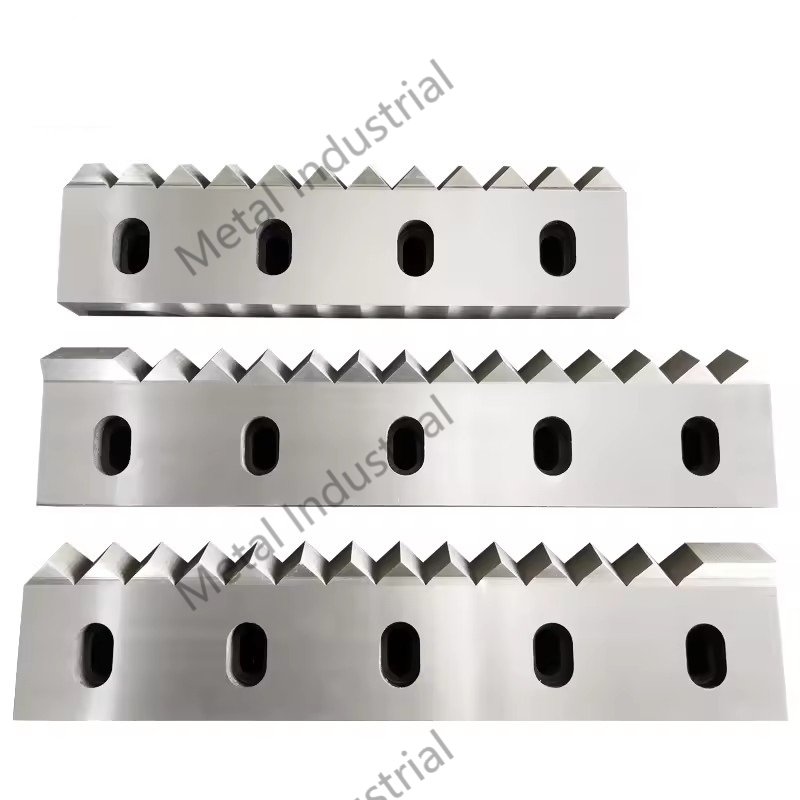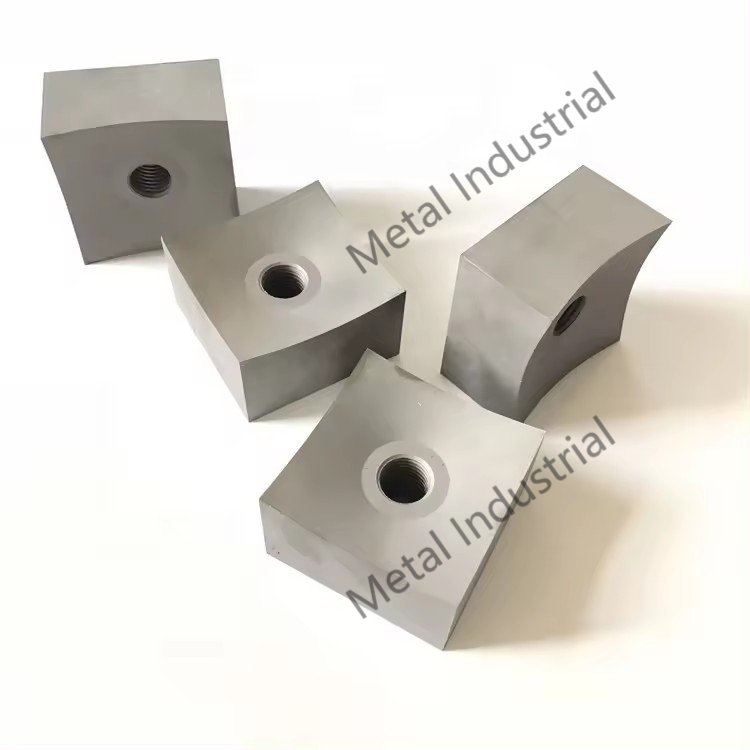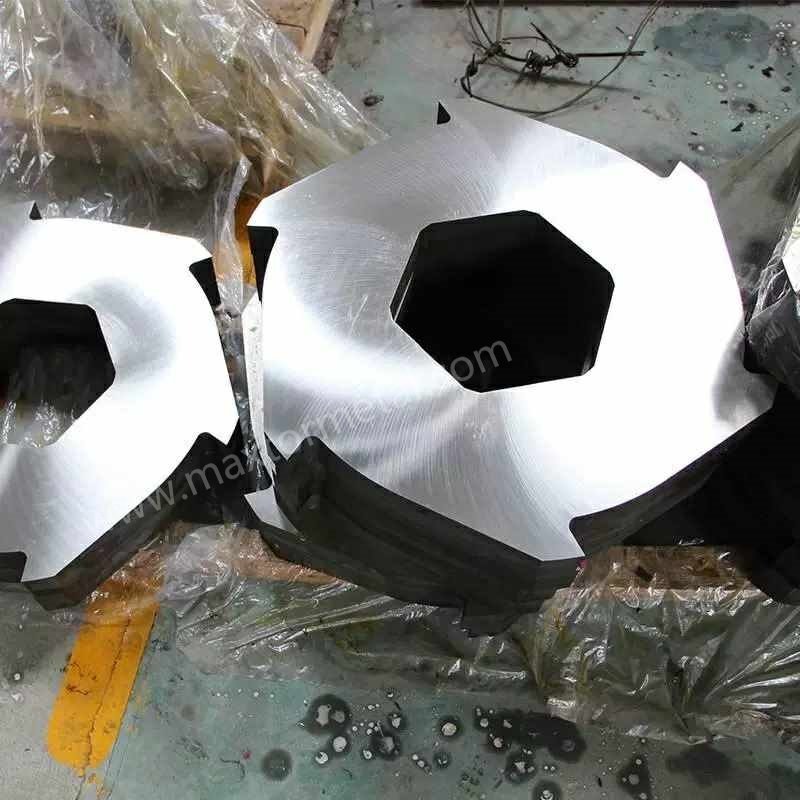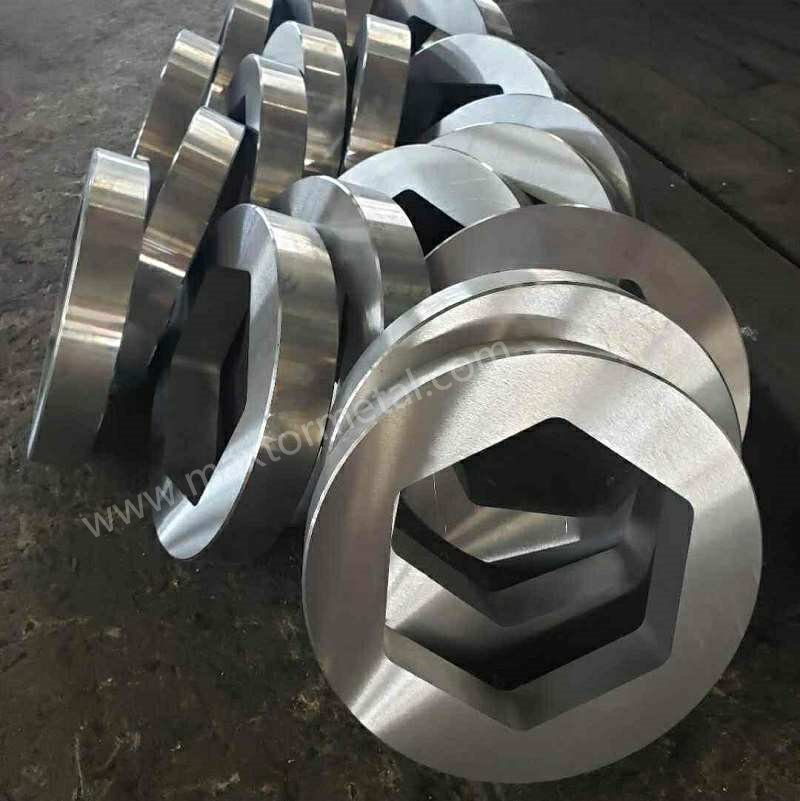Introduction
In modern industrial production, shredders have become essential equipment for handling various materials, and shredder blades are the core components that directly determine the machine’s performance and lifespan. Whether you’re recycling plastic, rubber, metal, or wood, choosing the right shredder blade can improve production efficiency and significantly reduce operating costs. However, the wide variety of blades available on the market can make the selection process complex and challenging. Choosing the wrong blade can lead to equipment damage, decreased efficiency, and even production stoppages. Therefore, this guide will provide you with a comprehensive overview to help you understand how to choose the most suitable industrial shredder blade for your production needs.
I. Understanding the Basics of Shredder Blades
Types of Shredder Blades
Choosing the right shredder blade depends primarily on the type of shredder. Here are the common types:
- Single-Shaft Shredder Blades: These are primarily used for primary crushing and volume reduction, suitable for handling larger pieces of solid waste. The blades are usually arranged in a spiral pattern to ensure continuous and even pressure during processing, preventing the machine from jamming.
- Double-Shaft Shredder Blades: Double-shaft shredders are equipped with two sets of blades that can shear and tear materials. This type of shredder blade is ideal for handling mixed materials, such as waste that combines metal and plastic.
- Multi-Shaft Shredder Blades: These are typically used for more precise shredding operations. The blade arrangement is complex, allowing it to adapt to materials of various shapes and sizes, ensuring efficient cutting.
Importance of Blade Materials
The material of shredder blades plays a crucial role in their performance and lifespan. Common blade materials include:
- Tool Steel: This material has high hardness and wear resistance, making it suitable for processing harder materials such as metal and hard plastics. In China, tool steels commonly used for making shredder blades include T-series tool steels, such as T10 and T12.
- Alloy Steel: By adding chromium, vanadium, and other alloy elements, the strength and corrosion resistance of the blades are enhanced, making them suitable for use in humid or chemical environments. Common alloy steels used for making shredder blades in China include 9CrSi, Cr12MoV, and 6CrW2Si.
- Carbide: Blades made from this material have extremely high hardness and wear resistance, making them ideal for processing highly abrasive materials, although they are more expensive. In China, commonly used carbide grades for making shredder blades include the YG series (such as YG6, YG8, YG10X, YG15) and the YW series (such as YW1, YW2).
Blade Manufacturing Process
The manufacturing process of the blades directly affects their quality and performance. Common manufacturing processes include:
- Forging: This process involves hammering to change the internal structure of the metal, improving the toughness and strength of the blades.
- Casting: Blades are formed using molds, which is suitable for making blades with complex shapes. However, the internal structure may not be as uniform as forged blades.
- Heat Treatment: This includes processes like quenching and tempering, which can improve the hardness and wear resistance of the blades, extending their service life.
II. Choosing Blades Based on Application Scenarios
Requirements for Shredding Different Materials
- Plastic: There are many types of plastics, including PE, PP, and PVC. When processing plastic, blades should have good toughness and moderate hardness to prevent accelerated wear due to the elasticity of the plastic.
- Rubber: Rubber materials have high elasticity and viscosity. Choosing carbide or high-alloy steel blades can reduce blade wear and improve cutting efficiency.
- Metal: Metal materials have high hardness, so blades need to have extremely high hardness and wear resistance. Alloy steel and carbide are ideal choices.
- Wood: The fiber structure of wood is complex, so blades need to be sharp and tough enough to achieve efficient cutting without damaging the blades.
Considering Production Volume and Shredding Speed
Production volume and shredding speed are important factors when choosing blades. High-output production lines usually require blades with higher durability and cutting efficiency. By choosing the right materials and blade types, you can improve production efficiency while minimizing replacement frequency and maintenance costs.
Considering Blade Maintenance and Replacement Cycles
The maintenance and replacement cycles of blades directly affect production costs and efficiency. Frequent blade replacement increases downtime and maintenance costs. Choosing blades with high wear resistance that are suitable for the materials and production conditions can extend their service life and reduce replacement frequency.
III. Evaluating the Reliability of Suppliers
Key Factors in Supplier Selection
Choosing a reliable supplier is crucial for purchasing high-quality blades. When evaluating suppliers, consider the following factors:
- Qualifications and Experience: Understand the supplier’s industry background, technical level, and market reputation.
- Customer Service and After-Sales Support: High-quality customer service and comprehensive after-sales support ensure that the supplier can provide timely solutions when issues arise with the product.
Asking About Supplier Testing and Customization Services
To ensure the selected blade is most suitable for your needs, it is advisable to communicate in depth with the supplier and learn about their testing and customization services. These services can help customers better understand product performance and customize based on their needs.
IV. Common Pitfalls in Blade Selection and How to Avoid Them
Focusing Solely on Price
Overemphasizing low prices when purchasing blades may lead to quality problems. Low-priced blades may use inferior materials or processes, resulting in a shorter lifespan and lower efficiency, ultimately increasing long-term costs.
Ignoring Blade Compatibility
Different models and brands of shredders have different requirements for blade size, shape, and material. Choosing incompatible blades can cause the shredder to malfunction or even damage the equipment.
Neglecting Special Environmental Requirements
In high-humidity, high-temperature, or chemical environments, the materials and design of the blades should meet specific usage conditions. Ignoring these factors can lead to rapid wear or corrosion of the blades.
Methods to Avoid These Pitfalls
To avoid the above pitfalls, it is recommended that users communicate in detail with suppliers during blade selection, fully understand the compatibility of the shredder and blade, the requirements of the usage environment, and choose the blades that best meet their needs.
V. Action Recommendations
Important Steps in Blade Selection
Choosing the right industrial shredder blade requires a comprehensive consideration of various factors, including materials, manufacturing processes, production conditions, and supplier reliability. With the guidance provided in this article, users can effectively reduce selection risks and improve production efficiency.
Immediate Action
To help you better select blades, we recommend the following steps:
- Evaluate your production needs and the characteristics of the materials to be shredded.
- Research the types and materials of blades available on the market and determine the suitable choices.
- Communicate with multiple suppliers to understand their products and services.
- Conduct testing and comparisons based on actual needs and choose the most suitable blade.
Encouragement for Further Consultation
If you encounter any problems in the blade selection process, please feel free to contact our expert team. We offer free consultation and technical support to help you find the best solution.
Conclusion
Choosing the right shredder blade is a key step in improving production efficiency and reducing costs. Through the detailed guide provided in this article, we hope to help you make informed decisions when purchasing blades, ensuring your equipment runs stably and efficiently in the long term. If you have any questions or need further consultation, please feel free to contact us.








3 Responses
Nice article, thanks!
I’m learning. Thank you.